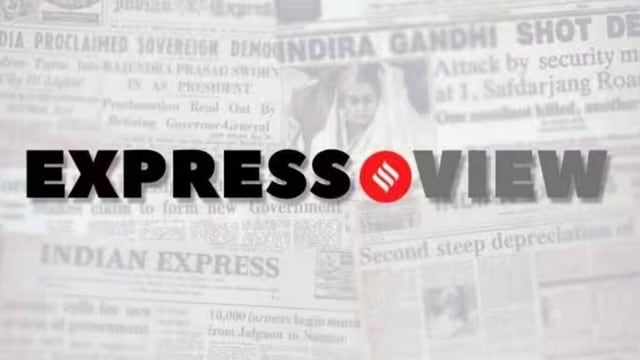
In an unprecedented move, the Supreme Court has made public the allegations that cash was found at the residence of Delhi High Court judge Justice Yashwant Varma, when a fire broke out on the premises on March 14. The Chief Justice of India, Sanjiv Khanna, has also set up a three-member panel for an in-house inquiry, setting in motion the constitutional process for dealing with complaints against judges of the higher judiciary. Meanwhile, judicial work has been withdrawn from Justice Varma. These are exemplary moves by CJI Khanna — he has sent out a much-needed signal that the court will privilege the imperative of institutional transparency. It sets a new benchmark for handling complaints concerning the integrity of individual members of the institution that is tasked with custodianship of the core principles and fundamental values of a constitutional democracy, and which must, therefore, be above suspicion. And yet, this is only the first step.
To be sure, the facts of the case will become clearer as the in-house inquiry commences, and other law-enforcing agencies step in. But for now, the SC’s disclosures, the partly redacted preliminary internal inquiry report, the official response of Justice Varma denying any wrongdoing and a purported video showing sacks of half-burnt currency notes, raise key questions that need to be addressed. This is the second instance of an in-house inquiry in just over three months — in December, Justice Khanna had stepped in when complaints were made after Allahabad High Court judge Justice Shekhar Yadav made a controversial speech on the Uniform Civil Code at an event organised by the Vishwa Hindu Parishad. In that instance, a judge was seen to be taking a (religious) side and painting an “Other” in ways that were disrespectful and discriminatory. In the aftermath, the Supreme Court sought details from the High Court, Opposition leaders expressed outrage and civil society organisations called for an inquiry. The judiciary, today, is more and more under the public glare. In the social media age, the conduct of judges, within and outside the courtroom, is under constant scrutiny. The judiciary’s old methods — of dealing with a case of corruption or an instance of indiscipline through a punitive transfer — will no longer be enough. In Justice Varma’s case, for instance, when the Collegium recommended him for a transfer to his parent high court, the Allahabad HC Bar Association was quick to protest, strongly, against being seen as a “trash bin.” The moment has also been seized to underscore a political argument for the National Judicial Appointments Commission. Speaking in the Rajya Sabha on the issue, Vice President Jagdeep Dhankhar referred to the NJAC Act that was struck down by the court: “That historic legislation endorsed by this Parliament with unprecedented consensual support unknown to parliamentary history of this country dealt with the malaise very severely,” he said.
For the judiciary, this will be a test case for how it handles cases where one of its own is in the dock, fairly and firmly, and is seen to do so too. What is at stake here is not just the conduct of an individual judge, but the principle of the independence of the judiciary that anchors a system of checks and balances. As CJI Khanna retires in May, his successor BR Gavai, will need to take on the stewardship of this delicate balancing act — ensuring that due process takes its course while guarding and maintaining institutional autonomy.